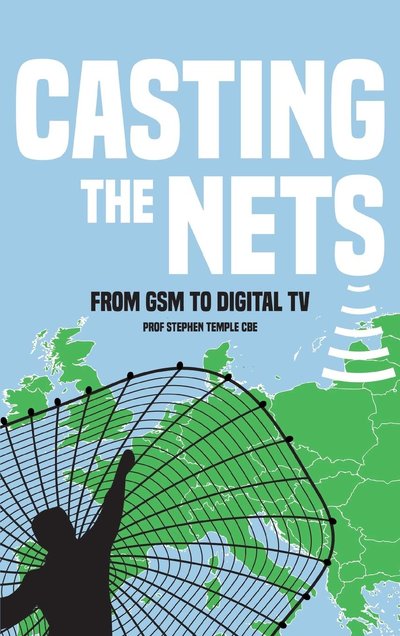


The UK government has called for more pro-investment regulation. A good place to start would be to scrap the market mechanisms that have been used to regulate licensed mobile spectrum for the 3G, 4G and 5G mobile infrastructure up-grades. A book just published shows they have been the exact opposite of “pro-investment”. Their costs have been enormous (including collateral damaged the quality of UK wide mobile coverage) and the claimed spectrum efficiency benefits have been invisible. With such an exceedingly poor regulatory cost-benefit it is time for a change.
This is one of the principal conclusions of a new book just published on Amazon called: Emperor Ofcom’s new clothes – How the market approach to radio spectrum failed the country’s mobile infrastructure and how to turn it around.
The “Prof William Webb and Prof Stephen Temple” co-authorship has been particularly successful in penetrating the wall between a theoretically abstract world of market mechanisms and the real world of upgrading national mobile infrastructures. This results from each coming from opposite sides of the track. Willaim is ex-Ofcom (and led the review in which Ofcom adopted the market mechanisms) and Stephen is an ex-MNO director and ex DTI senior official (who shaped the way spectrum was released for the digitalisation of the UK’s mobile networks). Thus the same evidence has been viewed through two very different lenses.
This has unlocked the most rigorously examination to date of the cost-benefit of the market mechanisms approach to spectrum regulation over the 3G,4G and 5G network upgrade implementation periods. The cost side for the industry has been enormous (£27.5 billion in auction fees and around £300m a year in annual licence fees). There has also been unintended collateral damage to the quality of the UK’s mobile infrastructure from each of the 3G, 4G and 5G spectrum auctions. The benefits side of the market mechanisms, in terms of increased spectrum efficiency, has been examined in great detail. None could be found. If they exist at all then they are invisible (a conclusion that led to the book’s title). Their most recent defense of spectrum pricing is based on “a just in case” a highly implausible situation ever arises that the MNOs would hand back their critical 900/1800 MHz spectrum to save £60-90m a year. That flight of fancy by Ofcom’s economists will cost the industry £6 billion over the next twenty years. The market mechanisms approach can now be fairly characterised as an anti-investment regulatory framework. Such exceedingly poor cost benefit is bad regulation. It has to go.
Sweeping away the failed market mechanisms approach leaves a “directional” policy vacuum to be filled. This is important as, in the words of the late Henry Kissinger, “If you don’t know where you are going, every road will get you nowhere”. What is to be the new approach? At a level of generality that is an easy question to answer – a pro-investment spectrum regulatory framework. The question then becomes – what does that look like.
A new pro investment mobile spectrum regulation requires us to think differently about spectrum efficiency and optimal use of the spectrum. Policy moves from the abstract to the specific – licensed mobile spectrum is being used today to support a national mobile infrastructure that is transporting huge amounts of data of economic and societal importance to and from 40m+ smartphones and millions of other devices across the country.
This is a great simplification in understanding what needs to be done to increase efficient use of the spectrum. The most efficient use of “coverage spectrum” is when it delivers the maximum coverage and the most efficient use of “capacity spectrum” is where it is adding the most capacity in the most places where it is needed. There is no other logical way to increase spectrum efficiency for this class of spectrum use. It is convenient to combine the coverage and capacity elements into a single term “quality of coverage” ie where there is coverage there is always sufficient capacity to meet all concurrent demand.
“Optimal use” brings into the picture the financing needed to make the most efficient use of the spectrum. As finance is not infinite “optimal use” is securing the most efficient use of the spectrum for the funding available. Private funding is gated by the profitability of providing a given level of coverage and capacity. Public funding is gated by the judgement of the government on what priority is warranted for a tax payer subsidy.
The current status quo is that the government has pledged around £500m for the Shared Rural Network to cover areas of political importance but of least (no) economic importance ie the areas “the competitive market” will never cover. The private sector (the mobile network operators) have covered most (but not all of the rest of the country) with the most basic level of coverage. Basis is just having a mobile signal is no longer enough. There has to be enough data capacity behind it to do all the useful things consumers and businesses want to do. To meet this rising demand MNOs are struggling to invest in 5G mid band capacity at scale. This leaves two significant public policy challenges:
This is largely an investment issue. But spectrum and investment are interchangeable commodities. Cell splitting costs investment in new masts but generates new spectrum capacity by re-using the same spectrum. Conversely with more clean spectrum from Ofcom this substantial investment can be avoided.
What Part 2 of the books sets out to do is to explain how mobile spectrum regulation and policy can get right inside this relationship between spectrum and investment and deliver a far greater quality of coverage across the UK for the current level of investment “profitability” and “tax payer subsidy” limits are setting. Financial (cost of coverage) and spectrum “efficiency” is at the heart of this transformation. The new approach needs a name. We’ve termed it “essential quality of coverage” driven mobile regulation. It is one of those rare revolutions where everybody can emerge a winner.
This is the first book for decades that dares everyone to think differently about licences mobile spectrum policy and regulation. It is the only route open to the UK to secure far better universal mobile quality coverage and delivered by profitable MNO’s. It is time for a change. We hope that, once you have read the book, you will agree with us.
Read more

The pressing need across Europe is for pro-investment mobile regulation. This book describes, for the first time, what a pro-investment mobile regulatory framework might look like.

Casting the Nets provides an unparalleled insight into the great digital transformation of Britain’s communications networks over the period 1984-2004. It gives a graphic description of industrial policy-in-action and brings to life what is involved.
All content here (c) copyright of Stephen Temple